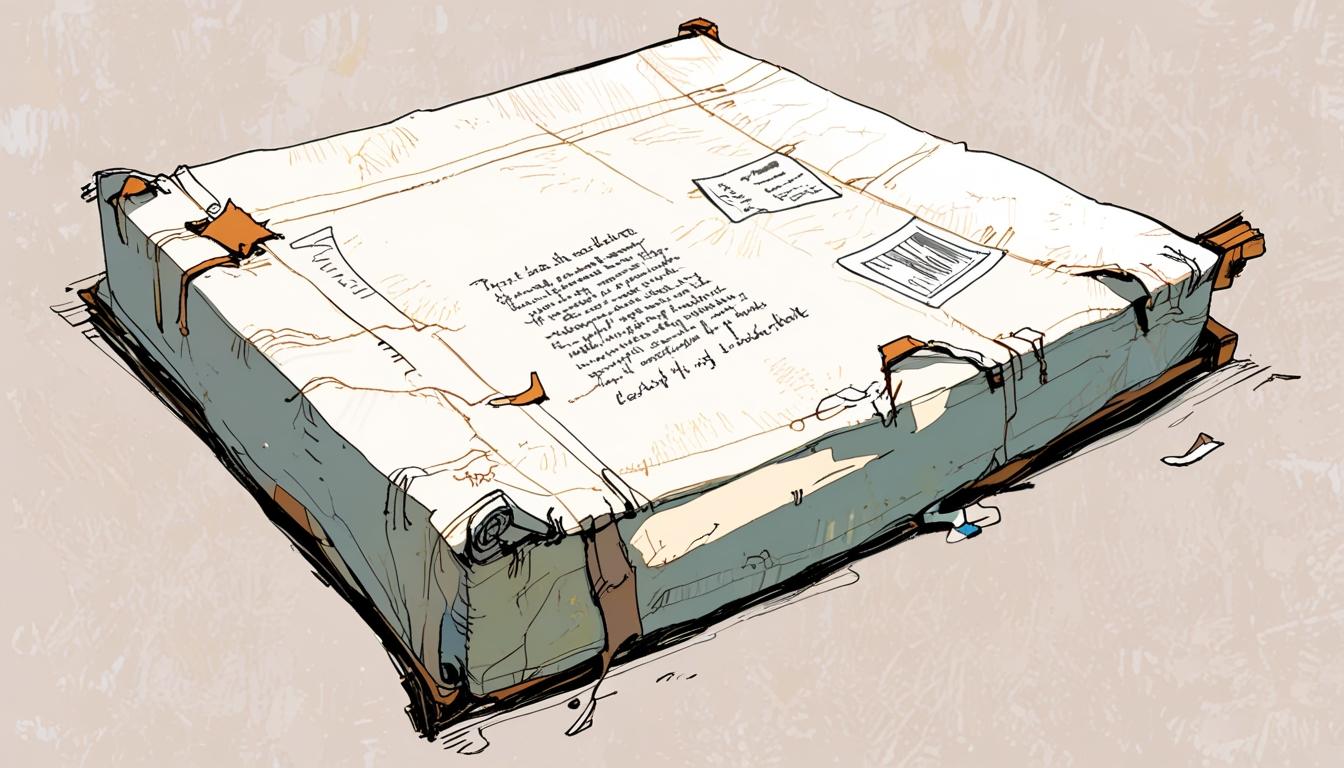In February, Wendy Ward, a Sheffield-based designer, maker, and eco-activist, initiated a distinctive form of protest by posting a dilapidated polycotton bedsheet back to Simon Roberts, CEO of Sainsbury’s. The sheet, purchased from Sainsbury’s over a decade ago, had reached the end of its life and was no longer fit for reuse, donation, composting, or repurposing, posing a challenge for sustainable disposal. "I purchased this from Sainsbury’s at least 10 years ago," Ward wrote in an accompanying letter. "It has served me well. However, I have no sustainable options available for what I should do with it." The polyester blend made composting impossible, and non-absorbency ruled out using it for cleaning. She expressed concern that textile recycling collections often result in items being shipped overseas or incinerated rather than recycled.
Ward’s letter highlighted a broader issue within fashion retail—products are designed without proper consideration for their end-of-life disposal, leaving consumers with limited waste options. Ward lamented that her only real choice was to place the item in general waste, which in Sheffield is incinerated for energy recovery, a process she described as environmentally damaging. Despite Sainsbury’s response, which she described as "a lame fob-off" and resembling a generic complaints template, Ward’s social media followers rallied behind her, inspiring her to launch the #TakeItBack campaign. The initiative encourages consumers to send back worn-out clothing to brands with a polite, non-confrontational letter, seeking clarity on how such items will be handled at their end of life.
The Guardian undertook the campaign, sending worn-out clothing items to several UK high street brands, including Marks & Spencer, Uniqlo, H&M, and French Connection. Marks & Spencer was the first to reply, referencing its "industry-leading sustainability programme," Plan A, and its take-back scheme. Uniqlo acknowledged the campaign letter and promised a future response, while H&M and French Connection had yet to reply.
This campaign points to a deeper crisis within the textile recycling sector in the UK. Charity shops, long a channel for donating used clothes, are now struggling under the weight of damaged or unsellable textiles. Many shops must pay for the disposal of unwanted clothing, as the value of scrap has plummeted. Emma King, manager of Weston Hospicecare charity shops in Somerset, detailed the financial challenges her shops face, once earning 65p per kilogram for unsold textiles, now reduced to 10p. Smaller and more remote charity shops often cannot afford to transport waste to recyclers, forcing some to refuse donations.
In East Sussex, the independent charity shop Second Life faced a similar predicament when its rag merchant ceased collections, labelling their waste as excessive. Manager Naomi Phitidis revealed the difficult choice to pay for local incineration rather than send textiles overseas to countries like Ghana or Pakistan, highlighting concerns about "waste colonialism." The shop now requests customers not to donate damaged or stained items due to these financial and ethical constraints.
The downstream textile sorting and recycling industry is also facing financial strain. According to a forthcoming report by the environmental action organisation Wrap, the UK’s worn-out textiles cost collectors and sorters £88 million annually to process. Cristina Sabaiduc, a senior textiles specialist at Wrap, warned of a "partial collapse" in this sector, predicting that local textile banks and charity shops might disappear, leading to more waste being placed in general bins despite consumer reluctance.
Fast fashion is largely blamed for exacerbating this problem, as the market is flooded with low-quality, short-lived garments that do not sell well in secondhand markets. This saturation lowers the resale value of used clothes and heightens the volume of waste destined for rag merchants or incineration. Volunteers at Second Life clear around 250 kilograms of unsold clothing every fortnight, underscoring the scale of this issue.
Fibre-to-fibre recycling, which could transform old textiles into new, quality fabrics, has made minimal progress due to high costs and complexity, especially compared with the cheaper option of producing virgin polyester. Most recycled polyester on the market comes from plastic bottles, not clothing. The high calorific value of synthetic textiles makes incineration for energy recovery commercially attractive, which complicates efforts to encourage recycling.
Though several fast fashion brands offer take-back schemes (including H&M, Primark, and Zara), investigations have revealed they often result in clothing being destroyed, abandoned, or shipped overseas. A 2023 investigation by the environmental group Changing Markets Foundation found that 75% of donated clothing in such schemes was not sustainably processed.
Consumers like Ward and artist Eilidh Weir are pushing brands to account for the lifecycle of their products. "The elastane has degraded, so they have saggy knees and that weird fluting," Ward said referring to a pair of jeans returned to Sainsbury’s. Both individuals expressed reluctance to pass on worn-out garments to charity shops or waste systems that lead to questionable environmental outcomes.
Ward identified extended producer responsibility (EPR) as a potential solution—where companies would be held accountable for the end-of-life impact of their products. While the UK has no immediate plans to legislate EPR for textiles, the European Union is expected to introduce mandatory textile EPR in the coming years. Dawn Dungate, an independent consultant involved in textile recycling, emphasised the necessity of EPR to fund waste collection, sorting, and recycling infrastructure.
The #TakeItBack campaign aims to expose the hidden complexities of textile waste, challenging assumptions held by consumers who believe their donations are being effectively reused or recycled. Ward said, “People think they’re doing a good thing and that their rubbish will be of some use, but I think your average person would be shocked if they were confronted with the reality.”
The Guardian is reporting on this ongoing issue, illustrating the multifaceted challenges faced by consumers, charity shops, recyclers, and manufacturers when confronting the lifecycle of clothing in the current fashion economy.
Source: Noah Wire Services
